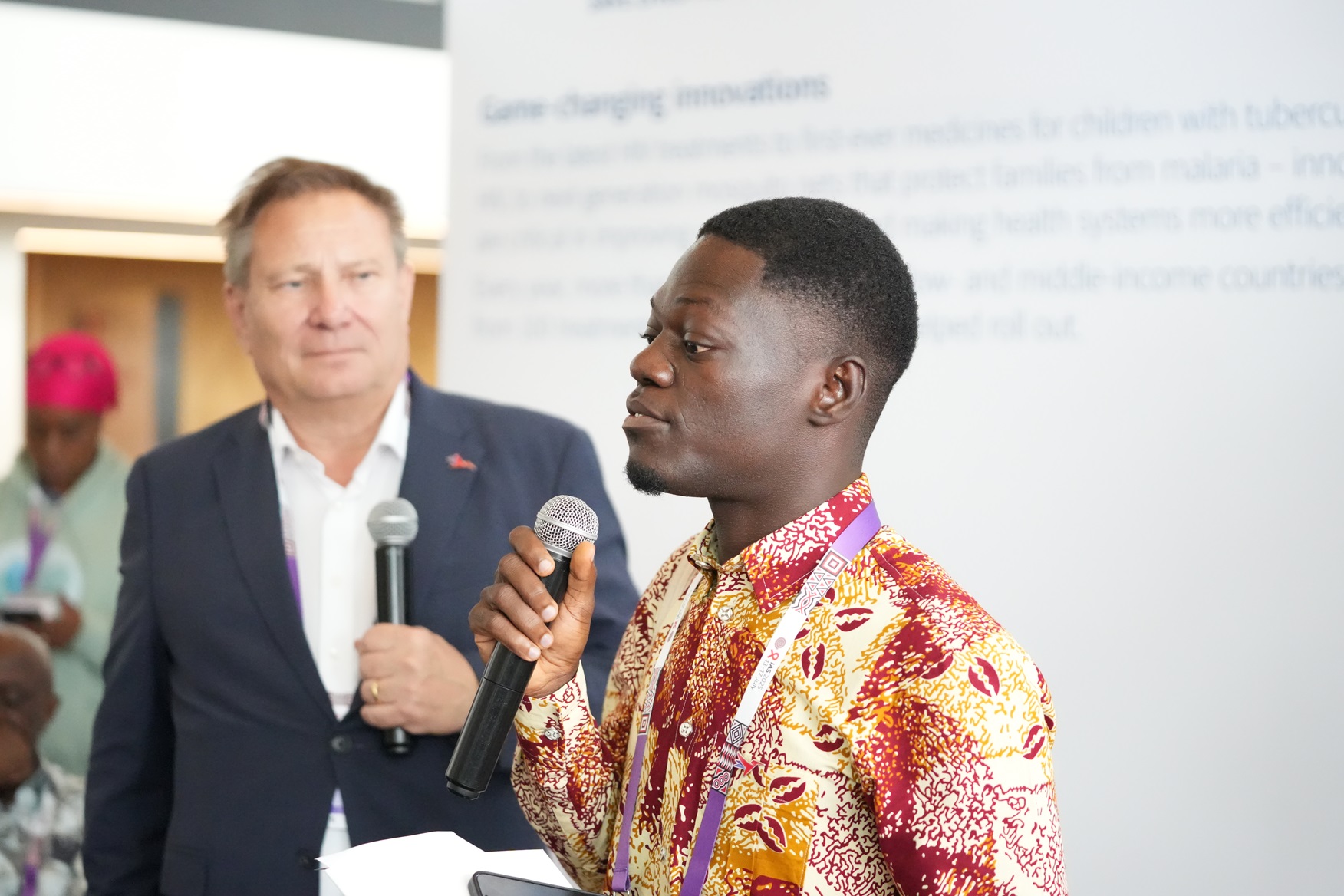I’m 27 years old, and I began my journey in the HIV response five or six years ago in Ghana’s northern region as a peer educator. Today, I serve as the Executive Secretary of the Ghana Network of People Living with HIV and as an alternate board member representing youth and the West African region on the Unitaid Board.
It’s been a path shaped by both grassroots community work and high-level policy engagement. But I’ve learned one thing very clearly: young people must be more than just recipients of services — we must be active, empowered partners in the global HIV response.

The youth engagement gap
For too long, the HIV response has taken a top-down approach. In most cases, young people are only brought into the conversation after major decisions have already been made — if we’re included at all.
Thanks to global institutions like the Global Fund and Unitaid, we’ve started to see more deliberate youth engagement. Unitaid, for example, ensures that young people like me have a seat at the table, including governance roles such as my own position as vice-chair of the Finance Accountability Committee, on behalf of the Communities Delegation. That is a big step.
But we still face significant barriers. In Ghana, youth engagement at the national level remains limited. Most opportunities for involvement come through civil society initiatives, not government-led processes. Young people are rarely included in technical committees, clinical trials, or national-level planning.
Too often, we are treated as beneficiaries, not equal stakeholders. That needs to change.
What’s holding us back
There are two main challenges that limit youth engagement. The first is gaps in capacity. Many young advocates need more training and technical support to meaningfully participate in high-level discussions that are often clinical or policy heavy. You can’t expect someone to contribute effectively without equipping them with the right tools.
Secondly, there’s a lack of inclusive spaces. National planning bodies are often dominated by academics and technical experts. Young people — especially those from marginalized communities — aren’t given the room to speak or shape policy.
In many countries, punitive laws and discriminatory policies create even more barriers. These laws criminalize certain communities and make it risky — even dangerous — for some young people to participate in public advocacy or health programming.
Global progress, local gaps
At the global level, events like the IAS Conference are making progress. IAS has created youth pavilions and youth-led sessions, and I’ve had the privilege to help shape the roadmap for AIDS 2026 in Rio as part of its advisory committee.
But the situation on the ground doesn’t always match this momentum. The irony is that the global stage is more inclusive than the national one — but access to that global stage is limited and highly competitive. As a result, many of the young people who most need to be heard remain excluded.
What needs to change
If I could change one thing, it would be this: recognize young people as co-creators, not just consultees. Don’t ask for our input once and disappear. Bring us into the full cycle of planning, design, implementation, and review.
Programs also need to reach beyond urban centers. In Ghana and other low- and middle-income countries, young people in rural areas often live far from health facilities. If we centralize all services and programming in major cities, we not only fail to reach the people who need them most but potentially fail to involve the people who might have the most to contribute.
We must decentralize services and create tailored programs that reflect young people’s lived realities — whether urban, rural, LGBTQ+, or living with HIV.
To donors and institutions: Walk the talk
To institutions that claim to value youth voices: we see your strategies, your talking points, your frameworks. But we need more than words.
Don’t just engage us when you need feedback — build with us, plan with us, and implement with us. Follow the example of programs like UNFPA’s Youth Leaders initiative, where young people are active implementers and decision-makers, not just a checkbox in a community consultation.
Unitaid has already shown leadership in this area by giving young people a real voice at the board level. Now we must go further — ensuring that grants, policies, and partnerships meaningfully reflect the diversity and leadership potential of young people in all our communities.
Final thoughts
We are ready. We are capable. And we are already making a difference. But our impact will be greater when we are treated not as passive recipients, but as equals in shaping the global HIV response.
As someone who began this journey at the grassroots and now works at the global level, I am calling for a shift from consultation to co-creation. Because young people are not the future. We’re the now – and it’s time to reflect that.